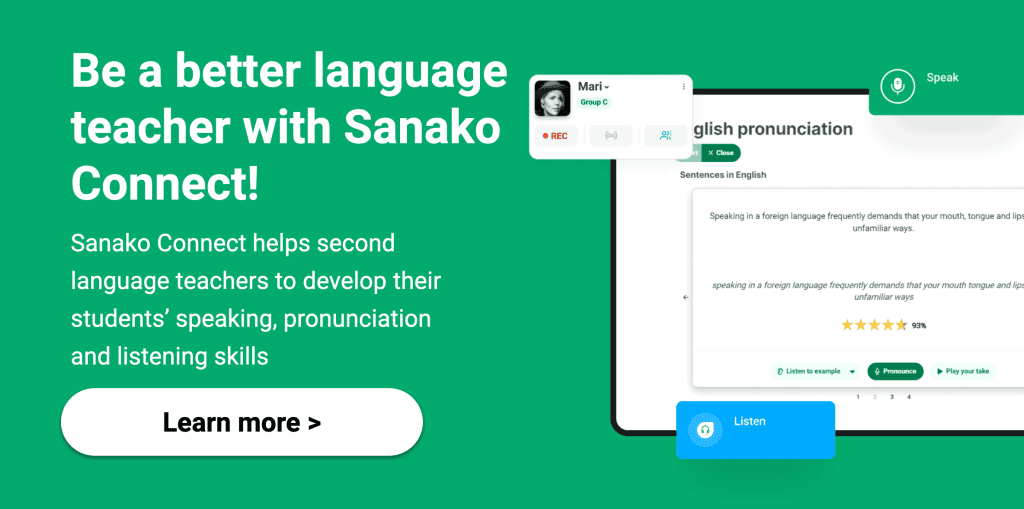Like other fields of human endeavour, all language teaching approaches go through periods of being widely used or of being relegated to the history books. The Grammar-Translation Method (GTM) has, for example, had a long and illustrious history but is now less frequently used in classrooms. But it does still have some valuable tricks up its sleeve.
This blog post reviews the Grammar-Translation methodology’s historical application and considers how it could be reimagined for 2024. This would give it fresh purpose and relevance for today’s language educators and their learners.
The Grammar-Translation method’s historical background
The roots of GTM can be traced back to ancient Greece and Rome, where grammar and rhetoric were considered essential components of a well-rounded education. In these times, language learning was primarily focused on understanding and appreciating classical literature. GTM provided a clear and well-structured method to help students achieve this goal.
Similarly, during the 17th and 18th centuries, GTM was widely used as the default approach for language teaching. Its emphasis on grammar and logic was closely aligned with the period’s focus on reason and intellectual rigour. GTM was viewed as a good way for educators to develop language skills and to build critical thinking skills, analytical abilities and cultural understanding.
The peak of GTM’s popularity came in the 19th century, when it was the dominant teaching approach in both schools and universities. The focus on grammar and translation was considered essential for academic success and intellectual development, so textbooks carefully reflected its approaches and key principles.
But by the early 20th century, GTM began to face criticism for its limitations and ineffectiveness in fostering real-world communication skills. Its emphasis on written language and translation did not address key aspects of modern language learning and other language teaching methods, such as the Audio-Lingual Method and the Communicative Approach, became more popular. Both of these methods prioritise spoken language practice, interaction with peers and native speakers through authentic communication activities.
Aims and objectives of the Grammar-Translation method
While GTM is no longer the primary method for most language teaching, it still has some application, particularly in the early stages of language learning and for students who prefer a structured approach. Educators can use it in combination with more modern approaches to deliver a comprehensive and engaging learning experience for all learners.
GTM is specifically focused on explicit grammar instruction. Educators present and explain rules, often deductively, moving from general rules to specific examples. This is usually delivered in the learners’ native language – helping to support their rapid understanding and progress.
Advantages of GTM
- Develops strong understanding of grammar: GTM’s explicit focus on grammar rules helps learners develop a solid foundation in the mechanics of the language. This can be particularly beneficial for learners who prefer a structured approach to language learning.
- Improves vocabulary acquisition: Through translation exercises, learners encounter and learn new vocabulary in both the target and their native language.
- Increases reading comprehension: The emphasis on reading texts in the target language can improve learners’ ability to understand written content.
- The knowledge gained from GTM can serve as a stepping stone for learning more advanced language skills, such as speaking and listening.
- Some learners, particularly those who are analytical and enjoy memorization, may find GTM a helpful and engaging way to learn a language.
Disadvantages of GTM
- GTM has been criticised for being uncommunicative. Learners don’t get enough practice speaking and listening, which can hinder attempts to build real-life communication skills.
- Focus on accuracy over fluency can lead to hesitation and lack of confidence in spoken language.
- Its emphasis on memorization can make learning rote and uninspiring. Furthermore, students with different learning styles or goals may find GTM rigid and unproductive, hindering their motivation and engagement.
- Lack of cultural context: GTM often focuses solely on the mechanics of language, neglecting cultural nuances and context, which can lead to misunderstandings and misinterpretations.
When reviewing GTM’s appropriateness for your students, there are a few important factors to consider. Think about the goals of the language learning programme (i.e. are students learning for pleasure or to pass specific tests?); the individual needs of your learners; the skill and creativity of the language teacher and the availability of any support to deploy other resources and teaching methods.
Moving towards a new model for GTM
Instead of viewing GTM as a rigid, rule-cramming teaching approach, why not reconsider it as a springboard for more analytical thinking and language awareness? Here’s a five-step guide along with some specific implementation suggestions.
- Deconstruct and play: Turn grammar drills into detective puzzles. Dissect sentences, reveal the intricate mechanisms, and invite learners to become language architects, building their own creations with their new understanding.
- Contextualise, contextualise, contextualise: Grammar rules exist in a vibrant ecosystem. Embed them in relatable scenarios, authentic texts, and engaging simulations. Show learners how the rules have meaning, culture, and purpose.
- Translation with a twist: Ditch dry, literal exercises. Translate lyrics to create new musical narratives, rewrite classic poems from a different perspective, or craft collaborative multilingual dialogues. Try to make translation a bridge to creativity and cultural exchange.
- Use educational technology: Digital tools such as Sanako Connect can bring GTM to life. Online quizzes, interactive grammar games, and collaborative translation tasks can turn passive learning into active exploration.
- Celebrate the journey, not just the destination: Learning grammar isn’t just about getting top scores in a test. Recognize and celebrate the small victories like the “aha!” moments when a rule clicks and students use language with confidence.
And here’s a simple step lesson plan to use this reimagined GTM approach in your classroom.
Step 1: Choose a common grammatical construct (e.g. the past tense). Present it through a relatable video clip or short story.
Step 2: Break down the rule into its core components. Use visuals, diagrams and metaphors to make it more memorable for your students.
Step 3: Carefully explore the rule and look at it from different perspectives. Students should analyse sentences to identify the rule in action, and then manipulate it to create new sentences.
Step 4: Instead of a literal response, ask students to rewrite the text in a different genre, from a different character’s perspective, or with a specific tone.
Step 5: Celebrate student creations! Share translated works, analyse the approaches used and revel in the newfound awareness of language mechanics.
If you’d like to find out more about how Sanako’s dedicated language teaching software could transform your approach to language teaching, click here or the banner below to learn more!

